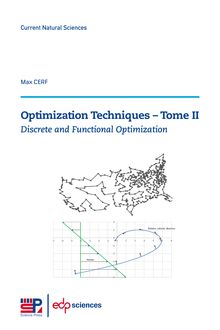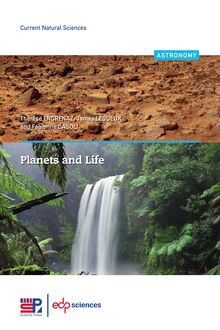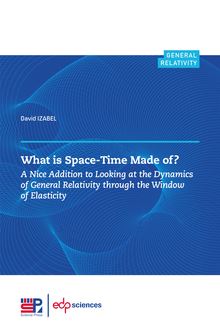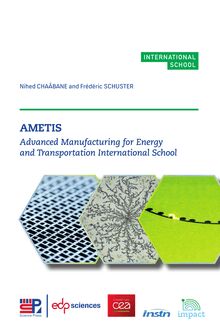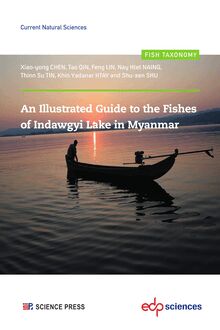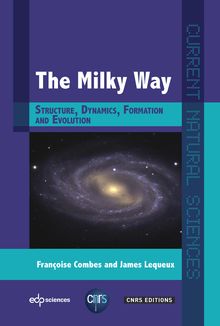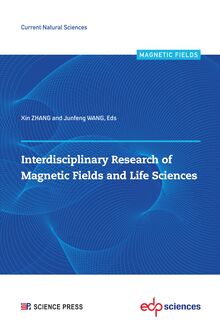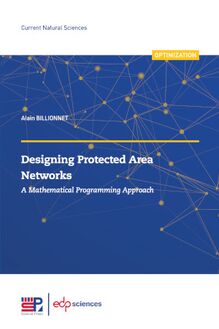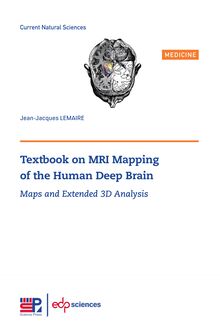-
 Univers
Univers
-
 Ebooks
Ebooks
-
 Livres audio
Livres audio
-
 Presse
Presse
-
 Podcasts
Podcasts
-
 BD
BD
-
 Documents
Documents
-
- Cours
- Révisions
- Ressources pédagogiques
- Sciences de l’éducation
- Manuels scolaires
- Langues
- Travaux de classe
- Annales de BEP
- Etudes supérieures
- Maternelle et primaire
- Fiches de lecture
- Orientation scolaire
- Méthodologie
- Corrigés de devoir
- Annales d’examens et concours
- Annales du bac
- Annales du brevet
- Rapports de stage
La lecture à portée de main
Découvre YouScribe en t'inscrivant gratuitement
Je m'inscrisNonlinear flow and well test analysis in porous media , livre ebook
Découvre YouScribe en t'inscrivant gratuitement
Je m'inscrisEn savoir plus
En savoir plus

Description
Based on the analysis of factors influencing fluid infiltration in porous media, this book systematically summarizes the characteristics and expressions of low-velocity nonlinear flow and high-velocity nonlinear flow infiltration in porous media and provides a set of evaluation methods. Using the exponential formula, the starting pressure gradient formula, and the binomial equation of motion, the authors present a detailed comparison and analysis of the production, pressure, and dimensionless background pressure of the nonlinear flow and Darcy linear flow for steady and unsteady flow. In addition, based on the equation of motion of the starting pressure gradient, a mathematical model of the one-, two-, and three-medium nonlinear seepage flow is established, and approximate analytical solutions are given while the graph of the corresponding well test curve is drawn. Finally, based on the mathematical model of the well test established from the exponential equation of the high-velocity nonlinear flow motion, the atypical well test curve and the relational surface of the time- and space-varying infiltration index are obtained. The authors also discuss the relationship between reservoir and fluid properties and the nonlinear flow test curve. This book is intended to serve as a reference for technical personnel, researchers, teachers, and students involved in oil and gas development. Its research contents provide a theoretical basis for the identification of water flow dominant channels in the long-term water injection development of high-water-cut oilfields, profile control and water shut-off, productivity evaluation of carbonate reservoirs and formation parameters.
Preface..................................................... III
CHAPTER 1
Mechanism of Nonlinear Flow and Analysis of Characteristics............ 1
1.1 Analysis of Factors Affecting Fluid Flow in Porous Media .......... 1
1.2 Mechanism of Nonlinear Flowin Low Permeability Reservoirs....... 3
1.2.1 Characteristics of Nonlinear Flow in Low Permeability
Reservoirs........................................ 4
1.2.2 Model of Nonlinear Flow in Low Permeability Reservoirs ..... 6
1.3 Mechanisms of Stress Sensitivity in Low-Permeability Reservoirs..... 9
1.3.1 Stress Sensitivity Characteristics of Low-Permeability
Reservoirs........................................ 9
1.3.2 Stress Sensitivity Modelfor Low Permeability Reservoirs ..... 10
1.4 Characteristics of High-Velocity Nonlinear Flow ................. 13
1.4.1 Introduction....................................... 13
1.4.2 Characteristics of High-Velocity Nonlinear Flow ............ 15
1.4.3 Judgment Method for High-Velocity Nonlinear Flow ........ 17
1.4.4 Equation for Description of High-Velocity Nonlinear Flow .... 19
CHAPTER 2
Model of Low-Velocity Nonlinear Flow in Single Media ................. 25
2.1 Threshold Pressure Gradient Model of Low-Velocity Nonlinear Flow . . 25
2.1.1 Stable Flow Model.................................. 26
2.1.2 Unstable Flow Model................................ 26
2.1.3 Dimensionless Well Test Model Under Unstable Flow ........ 28
2.2 Exponential Model of Low-Velocity Nonlinear Flow .............. 34
2.2.1 Stable Flow Model.................................. 35
2.2.2 Unstable Flow Model................................ 37
2.2.3 Dimensionless Well Test Model of Unstable Flow ........... 41
CHAPTER 3
Theory of Well Test for Low-Velocity Nonlinear Flow in Multiple Media .... 47
3.1 Mathematical Model of Low-Velocity Nonlinear Flow in Double
Media................................................. 47
3.1.1 Motion Equation................................... 48
3.1.2 Channeling Equation................................ 48
3.1.3 State Equation..................................... 49
3.1.4 Continuity Equation................................ 50
3.1.5 Simplified Models of Matrix Permeability and Fracture
Porosity.......................................... 50
3.1.6 Simplified Model of Matrix Permeability ................. 52
3.2 Theory of Well Test of Low-Velocity Nonlinear Flow in Double Media 53
3.2.1 Mathematical Model of Well Test in Dual-Porosity Reservoir
and Its Solution.................................... 53
3.2.2 Mathematical Model Considering Wellbore Storage Effect
and Skin Factor.................................... 56
3.2.3 Characteristics of Well Test Curve of Low-Velocity Nonlinear
Flow in Double Media............................... 56
3.2.4 Analysis of Factors Affecting the Well Test Curves
of Low-Velocity Nonlinear Flow in Double Media Reservoirs . . 59
3.3 Mathematical Model of Low-Velocity Nonlinear Flow in Triple
Media................................................. 67
3.3.1 Ideal Model of Triple Media........................... 68
3.3.2 Mathematical Model and Its Solution for Triple Media
Reservoirs........................................ 69
3.3.3 Well Test Curve Characteristics of Low-Velocity Nonlinear
Flow in Triple Media Reservoirs........................ 73
3.3.4 Analysis of Factors Affecting the Well Test Curves
of Low-Velocity Nonlinear Flow in Triple Media ............ 76
CHAPTER 4
Well Test of Nonlinear Flow Considering Stress Sensitivity in Low
Permeability Reservoirs........................................ 89
4.1 Factors Affecting Stress Sensitivity and Mathematical Models ....... 89
4.1.1 Change Characteristics of Stress Sensitivity ............... 89
4.1.2 Factors Affecting Stress Sensitivity ...................... 92
4.1.3 Mathematical Model of Stress Sensitivity ................. 94
4.2 Nonlinear Stable and Pseudo-Stable Flow Model Considering Stress
Sensitivity.............................................. 97
4.2.1 Productivity and Pressure Models of Stable Flow Considering
Stress Sensitivity................................... 97
4.2.2 Productivity and Pressure Models of Pseudo-Stable Flow
Considering Stress Sensitivity.......................... 97
4.3 Nonlinear and Unstable Well Test Considering Stress Sensitivity ..... 99
4.3.1 Assumptions and the Model........................... 99
4.3.2 Solution and Charts for Well Test Model Considering Stress
Sensitivity in Low Permeability Reservoirs ................ 101
4.4 Well Test in Fracture-Pore Double Media Considering Stress
Sensitivity.............................................. 108
4.4.1 Sensitivity of Fracture Permeability ..................... 108
4.4.2 Well-Test Model of Double Media Considering Stress
Sensitivity and Typical Curves......................... 111
CHAPTER 5
High-Velocity Nonlinear Stable Flow Model ......................... 119
5.1 Darcy Linear Radial Flow.................................. 119
5.2 Binomial Nonlinear Radial Flow ............................. 120
5.3 Exponential Nonlinear RadialFlow ........................... 122
5.4 Comparison of the Calculation Results for Darcy’s Linear Flow
and Nonlinear Flow...................................... 123
5.4.1 Producing in a Constant Production .................... 124
5.4.2 Producing at a Constant Bottom-Hole Pressure ............ 129
CHAPTER 6
Transient Well Test Under High-Velocity Nonlinear Flow ............... 139
6.1 Exponential High-Velocity Nonlinear Flow Model ................ 139
6.1.1 Exponential High-Velocity Nonlinear Flow Model ........... 139
6.1.2 Analytical Solution to the Exponential High-Velocity
Nonlinear Flow Model............................... 141
6.1.3 Numerical Solution for the Exponential High-Velocity
Nonlinear Flow Model............................... 144
6.1.4 Results and Discussion............................... 148
6.2 Binomial High-Velocity Nonlinear Flow Model .................. 152
6.2.1 Establishment of Flow Model.......................... 152
6.2.2 Solution of the Model................................ 153
6.2.3 Results and Discussion............................... 155
CHAPTER 7
Transient Well Test of Moving Boundary in High-Velocity Nonlinear Flow . . 159
7.1 Assumptions............................................ 159
7.2 Establishment and Solution ofthe Mathematical Model ........... 160
7.3 Results and Discussion.................................... 161
Nomenclatures............................................... 167
Appendix: Virtual ArgumentInteger Bessel Function .................. 173
References.................................................. 177
Sujets
Informations
| Publié par | EDP Sciences |
| Date de parution | 14 décembre 2023 |
| Nombre de lectures | 2 |
| EAN13 | 9782759831067 |
| Langue | English |
| Poids de l'ouvrage | 17 Mo |
Informations légales : prix de location à la page 0,9150€. Cette information est donnée uniquement à titre indicatif conformément à la législation en vigueur.
Extrait
-
 Univers
Univers
-
 Ebooks
Ebooks
-
 Livres audio
Livres audio
-
 Presse
Presse
-
 Podcasts
Podcasts
-
 BD
BD
-
 Documents
Documents
-
Jeunesse
-
Littérature
-
Ressources professionnelles
-
Santé et bien-être
-
Savoirs
-
Education
-
Loisirs et hobbies
-
Art, musique et cinéma
-
Actualité et débat de société
-
Jeunesse
-
Littérature
-
Ressources professionnelles
-
Santé et bien-être
-
Savoirs
-
Education
-
Loisirs et hobbies
-
Art, musique et cinéma
-
Actualité et débat de société
-
Actualités
-
Lifestyle
-
Presse jeunesse
-
Presse professionnelle
-
Pratique
-
Presse sportive
-
Presse internationale
-
Culture & Médias
-
Action et Aventures
-
Science-fiction et Fantasy
-
Société
-
Jeunesse
-
Littérature
-
Ressources professionnelles
-
Santé et bien-être
-
Savoirs
-
Education
-
Loisirs et hobbies
-
Art, musique et cinéma
-
Actualité et débat de société
- Cours
- Révisions
- Ressources pédagogiques
- Sciences de l’éducation
- Manuels scolaires
- Langues
- Travaux de classe
- Annales de BEP
- Etudes supérieures
- Maternelle et primaire
- Fiches de lecture
- Orientation scolaire
- Méthodologie
- Corrigés de devoir
- Annales d’examens et concours
- Annales du bac
- Annales du brevet
- Rapports de stage
